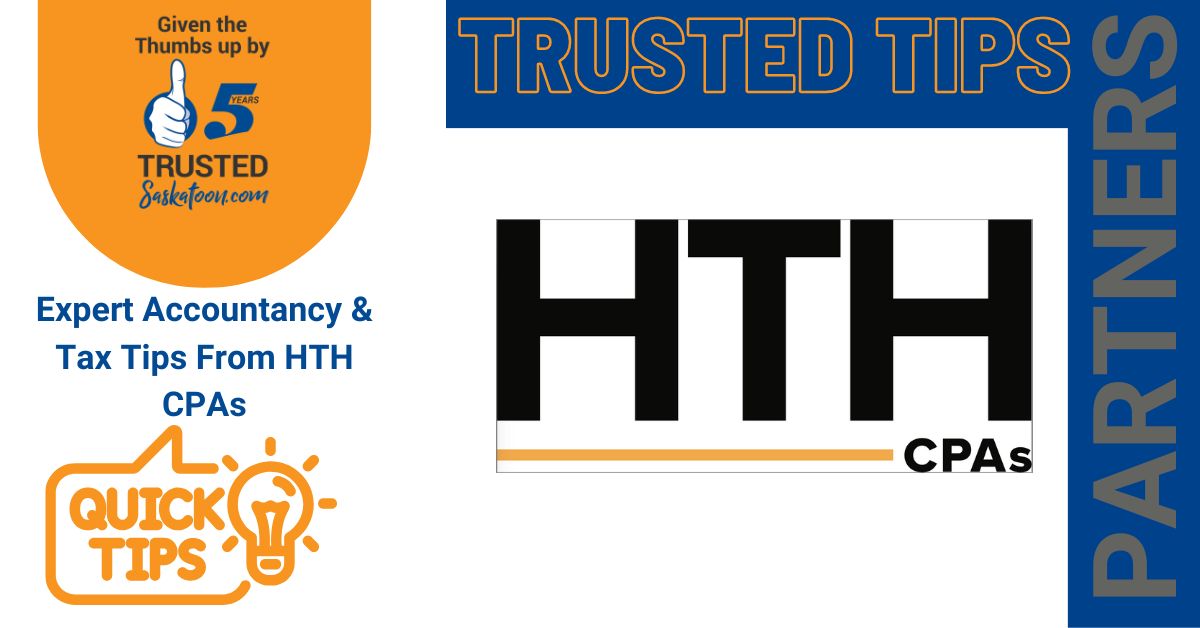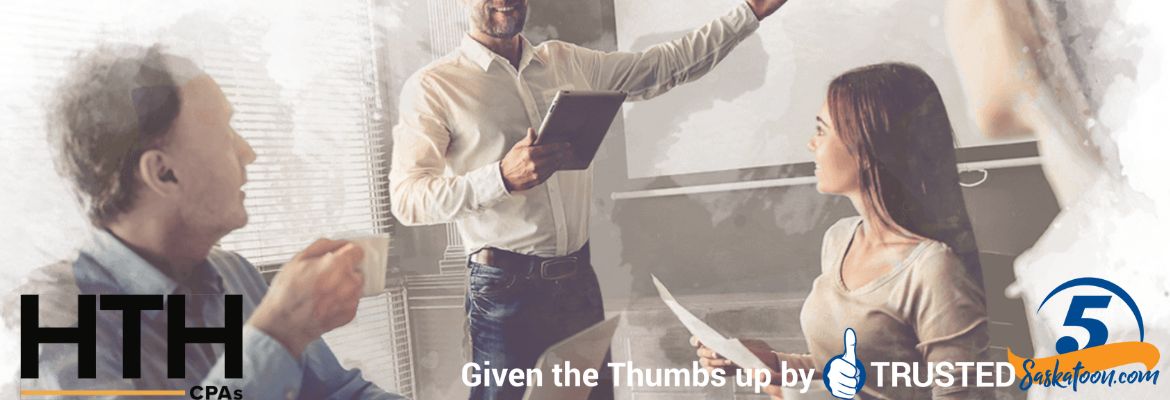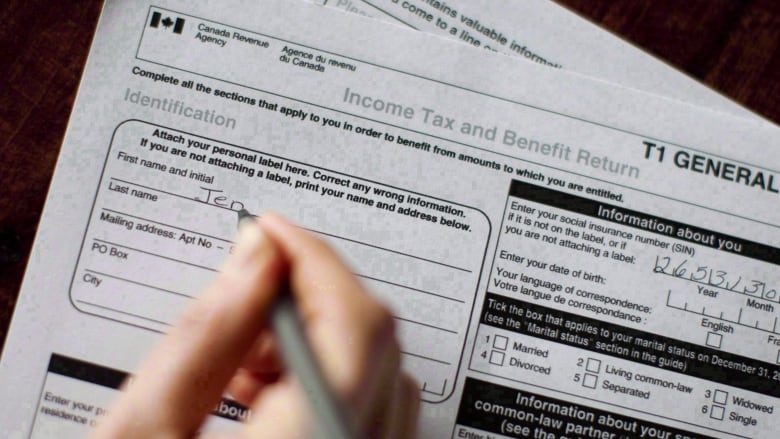Hounjet Tastad Harpham has decades of accounting experience working with clients across Saskatchewan. Their expert accounting advice is valued by clients ranging from individuals to businesses, small and large. Hounjet Tastad Harpham is a Trusted Saskatoon Accounting firm, and in their latest helpful Saskatoon accounting and tax tip, they explain the new Underused Housing Tax (UHT) Returns.

Underused Housing Tax (UHT)
The Government of Canada implemented the Underused Housing Tax (UHT) on June 9, 2022, and as of December 31, 2022, it will impact certain residential property owners.
A residential property owner who is not classified as an “Excluded Owner” must file the UHT return by April 30 of the following year. They may be required to pay an annual 1% tax on the Taxable Value or the Fair Market Value of the vacant or underused housing.
Excluded Owners include Canadian citizens and permanent residents, so most individuals will not need to file a UHT return. However, all private corporations, partnerships and trusts (even those owned by Canadian citizens) who own residential property will be required to file a UHT return annually, even if they are exempt from the UHT.
Failure to file a UHT return has significant penalties, starting at $5,000 for individuals and $10,000 for corporations. Further, failure to file could lead to the UHT being payable, even if an exemption should have applied.
If you are a Canadian citizen or permanent resident (except in capacity as a partner or trustee), no action is required on your part. Anyone else who owns residential property, including individuals who own the property as a partner or trustee, may want to consider discussing your situation with your tax advisor.
Exemptions
Your ownership of a residential property may be exempt from the Underused Housing Tax for a calendar year depending on:
- the type of owner you are
- the availability of the residential property
- the location and use of the residential property
- the occupant of the residential property
Remember, if you are an affected owner of a residential property in Canada on December 31 you still have to file an Underused Housing Tax return for the residential property for the calendar year, even if your ownership qualifies for an exemption.
---------------------------------------------------------------------
Accounting Services:
If you are looking for a Saskatoon chartered professional accountancy firm contact the team at Hounjet Tastad Harpham today.
& Tax specialist

Hounjet Tastad Harpham has decades of accounting experience working with clients across Saskatchewan. Their expert accounting advice is valued by clients ranging from individuals to businesses small and large. Hounjet Tastad Harpham are Trusted Saskatoon Accountants and in their latest accounting tip, they share info about the Canada Tax Deadline
Canada Tax Deadline
The time when Canadians will be able to shed their toques and snow boots is still months away, but tax season is right around the corner. Get ready to tell the government how much money you made last year, how much you already paid in tax and hope that the difference will put a few dollars back into your pocket.
But whether you’re in for a refund or a tax bill this year, simply filing your return can be stressful. There are old receipts to be gathered, deadlines to put on your calendar and new rules you should know about.
WATCH: Canadians pay on average 42.5 percent of their income in taxes, reports finds

When’s the tax deadline?
As usual, April 30 is the date most Canadians need to keep in mind. For the majority of tax filers, this is the deadline to both pay any tax due and file your return.
- If you’re self-employed, this year you have until June 17 to file (the deadline is normally June 15, but that falls on a Saturday this year). Remember, though, that if you owe taxes, you still need to pay up by April 30.
- If you’re late to either settle your balance or send in your paperwork, you’ll face late-filing penalty and daily interest charges on any taxes owed.
When’s the earliest I can file my taxes?
If you just can’t wait to get that big refund, know that the Canada Revenue Agency (CRA) will start accepting electronic returns on Feb. 18.
Most people want to skip the tax-processing queue because they anticipate getting money back. But having a big tax bill is also a good reason to file early. That allows you to set up a plan to pay your tax in instalments. The more you manage to pay by April 30, the fewer extra charges you’ll face.
What is the deadline to contribute to my RRSP?
You can put money into your registered retirement savings plan (RRSP) any time. But if you want to get a tax refund for your RRSP contribution with your 2018 return, the cutoff for adding funds is March 1.
WATCH: A look at how taxes affect your savings outside an RRSP or TFSA

What's New in 2019?
A few things:
New and improved tax breaks:
- Climate Action Incentive. Canadians who live in Saskatchewan, Manitoba, Ontario and New Brunswick are in for an extra tax credit this year. The money, which may create or boost a tax refund or reduce a balance owing, is meant to offset the cost of the carbon tax in provinces that haven’t established a carbon price of their own. Once the tax goes into effect on April 1, it will push up the cost of gasoline by 4.42 cents a litre, that of natural gas by 3.91 cents per cubic metre and that of propane by 3.1 cents a litre, according to government estimates. In an unusual move, Ottawa is putting cash into Canadians’ pocket before they incur the extra expense. According to the federal government’s calculations, the average household (defined as 2.6 people) in Saskatchewan will spend $403 more but receive $598 under the climate-action incentive. In all jurisdictions, residents of small and rural communities will receive an additional 10 percent supplement. The amount of the tax credit depends on family size — you can use this table to calculate how much your household can claim. It’s important to note that the tax credit applies to the household, not the individual taxpayer, said Lisa Gittens of H&R Block. This means that only one person for every family living under the same roof should claim the credit on her return, she added. All you have to do to receive the credit is file taxes and claim the credit in a new schedule that will come with the income-tax package in the four affected provinces.
- Medical expense tax credit for service animals. In certain circumstances, Canadians suffering from severe mental impairment will now be able to claim the cost of caring for service animals as a medical expense. The credit is only for animals trained to perform specific tasks that help their owners cope with their impairment. Examples of those tasks include things like “guiding a disoriented patient, searching the home of a patient with severe anxiety before they enter, and aiding a patient experiencing night terrors,” according to H&R Block.
- Accelerated capital cost allowance rates. Self-employed Canadians and business owners, listen up. This year you might be able to get more money back for the cost of things like business equipment, office furniture and computers. All those things lose value as they age, so the CRA allows you to gradually claim the cost of these purchases over the years. The good news is that in your 2018 return you’ll be able to get a bigger tax break for equipment bought after Nov. 20 of last year. For example, say you spent $1,000 last December on a new couch for your office. In the past, you’d have been able to claim only $100 of that expense for the first year. Now, you’ll be able to claim 50 per cent more than that, or $150. The change will apply for purchases of eligible equipment made up until the end of 2023 and be phased out between 2024 and 2027. The capital cost allowance reduces your taxable professional or business income.
Tax breaks you can no longer claim:
- Tuition. Students in Saskatchewan, Ontario and New Brunswick can no longer claim a provincial tax credit for their tuition expenses, noted Warren Orlans at TurboTax. The federal tuition tax credit, however, is still alive and well. Students over the age of 16 who are enrolled in post-secondary level courses can usually claim their tuition costs to help offset their tax bill. If they don’t have a lot of taxes to offset – which is often the case for students – they can carry forward the credit or pass it on to an eligible relative, which includes parents and grandparents. However, it’s the student who needs to claim the tax credit on her or his return, regardless of who will ultimately benefit from the tax break. The federal credit is 15 percent of your eligible tuition. For example, if you paid $2,000 in fees, you would be able to claim a $300 tax credit.

Tax-rate changes:
- Lower tax rate for small business.
The federal small business tax rate applies to business income up to $500,000 dropped from 10.5 percent to 10 percent in 2018 and came down another notch, to nine percent, as of Jan. 1, 2019. On the other hand, Ottawa also tightened the rules on so-called passive income. This is the income businesses earn when they invest surplus profits in things like mutual funds and real estate. As long as the extra cash stays inside the company, it is taxed at the corporate tax rate, which is lower than the rates that apply to individuals. The federal government contends many Canadians have been using passive income and its low corporate tax rate to grow their personal savings, so it tightened passive income rules. Under the new regimes, businesses with less than $50,000 in annual passive income can claim the full $500,000 at the small business rate. The federal government also cracked down on the practice, common among business owners, to sprinkle income to relatives in lower tax brackets as a way of reducing the family tax bill. With the new rules, there’s no tax advantage to income sprinkling unless business owners can prove that family members are, or have been within the previous five years, actively engaged in the business. The reduction in the small-business tax rate softens the effect of the tighter passive income and income sprinkling rules, Orlans noted. For some business owners, the changes will cancel each other out, he said. “When people file through the software, everything calculates itself in the back end, so people aren’t going to see a change in the income they’re claiming.”
Service upgrades from the CRA:
- CRA has a new phone system. More than a year after the auditor general blasted the CRA for issues at its call centres, the agency has migrated to a new phone platform. When Canadians call this year, the CRA is promising they will receive an estimated wait time to speak with an agent instead of the familiar busy signal or message to call back later. Callers will have the choice to wait on the phone, call back later or use automated options. The new system will also be able to route calls to agents with the skills necessary to deal with the question or issue at stake, the agency said. The auditor general found that even when Canadians did manage to get through to a CRA agent, they would get wrong information from almost 30 per cent of them. This tax season will be the test of whether the agency has made meaningful progress.
- Pay your taxes with an app. Many Canadians already pay most of their bills through their phones. Starting in February they’ll be able to do so with taxes, too. The MyCra web-based app will let you view and pay your tax balance with Interac, Visa Debit or Debit MasterCard, or by pre-authorized debit. You can also use the app to pay your taxes at a Canada Post outlet for a fee by generating a quick response (QR) code.
- Paper tax return shipped to your home. If you filed your taxes the old-fashioned way last year, the CRA will ship the 2018 income tax paperwork to your doorstep. If your package hasn’t appeared by February 11, you can download a copy of the return online or order a copy from the CRA.
- Email notifications about account information changes. If you’ve signed up for this service, starting on February 11, the CRA will begin to send you email notifications about account changes like updates to your address or direct-deposit information. This should make it easier to spot suspicious activity in your account.

Contact Hounjet Tastad Harpham today if you have any further questions related to the Canada Tax Deadline.
Hounjet Tastad Harpham Services:
If you are looking for a Saskatoon chartered professional accountant for your personal taxes or business accounting needs, contact the team at Hounjet Tastad Harpham today.
Hounjet Tastad Harpham has decades of accounting experience working with clients across Saskatchewan. Their expert accounting advice is valued by clients ranging from individuals to businesses small and large. Hounjet Tastad Harpham are Trusted Saskatoon Accountants and in their latest accounting tip, they answer a client question about how the new Climate Action Incentive ( CAI) (commonly referred to as the carbon tax rebate) program works.

Recently a client emailed us to ask a few questions before they dropped off their 2019 personal tax information. This particular client has been in a common law relationship for 7 years and has 3 children from a previous relationship.
The CAI Question:
Greetings Roseline, I'm going to drop off my information tomorrow, but I just wanted to ask about the new Federal ECO/Carbon Tax rebate program/ incentive - how is it decided , how is it calculated and who receives it?
The Answer
Individuals in Saskatchewan will receive a tax-free Climate Action Incentive payment after filing their 2018 tax return starting in 2019.
Climate Action Incentive payments in Saskatchewan will be calculated as follows for 2019:
The carbon tax rebate can be claimed by either spouse, so it’s up to you to decide which one. You can’t split it – it has to go to one or the other. In this case, we suggested that the client put it on her return because it includes the children. The rebate gives $305 for the individual, $152 for the spouse, and $76 per child, for a total of $685.00.
Depending on financial arrangements, the client who receives the rebate may then split half of the adult CAI (305 +152= ) and give their partner/spouse $228.50, keeping the 3 children's rebate for their expenses.
What About Other Family Circumstances?
The amount for a single parent's qualified dependant:
To claim the CAI payment for a single parent’s qualified dependant, on December 31, 2018, you must:
- not be married or in a common-law partnership, and
- have a child (or dependant) who meets all the conditions of a qualified dependant.
Shared custody
Only one claim for a CAI payment can be made per child. The payment cannot be split between parents.
Supplement for residents of small and rural communities
To claim the supplement for residents of small and rural communities, you must have resided outside of a census metropolitan area (CMA) on December 31, 2018.
Find out if you qualify for the 10% supplement for residents of small and rural communities.
| Province | Basic Amount | Spouse or common-law
partner amount | Qualified dependant
amount | Single parent's
qualified dependant
amount |
| Saskatchewan | $305 | $152 | $76 | $152 |
Claim the CAI payment
To claim the CAI payment, you must:
- complete your 2018 income tax and benefit return
- complete Schedule 14 included with your return
- send (file) your return to the Canada Revenue Agency
The CAI payment will be automatically applied to your balance owing for the year, if applicable, or may increase the amount of any refund you may be entitled to.

Contact Hounjet Tastad Harpham today if you have any further questions related to CAI.
Hounjet Tastad Harpham Services:
If you are looking for a Saskatoon chartered professional accountant for your personal taxes or business accounting needs, contact the team at Hounjet Tastad Harpham today.